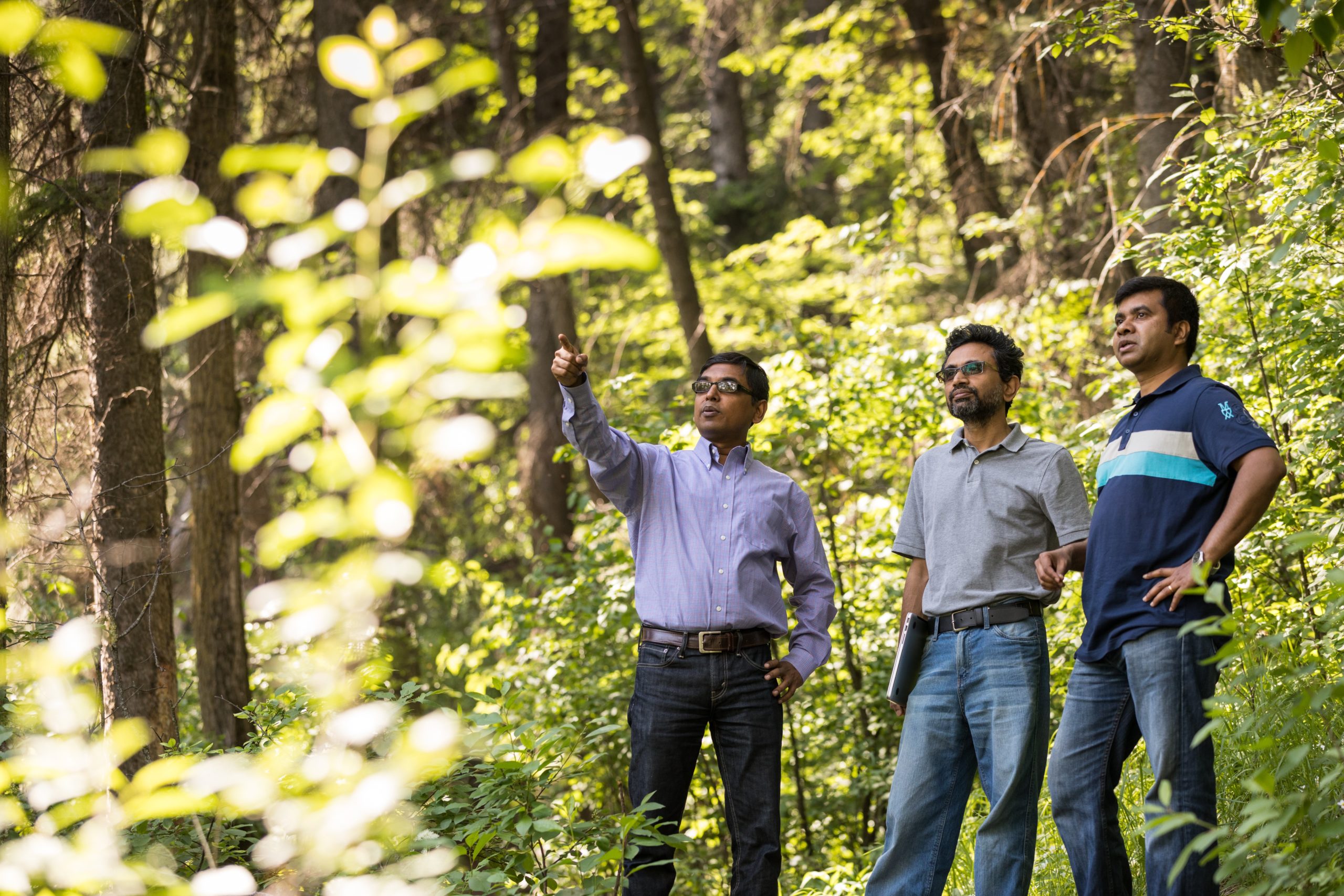Photo courtesy of Schulich School of Engineering, University of Calgary
Alberta’s Engineers Fight Fire with Science
In 2011, flames ripped through the town of Slave Lake, a wildfire that left $700 million in damage in its wake. In only two days, the blaze destroyed 40 per cent of the town.
Just five years later, Fort McMurray was ravaged by its own record-setting inferno—with a damage estimate of $9.9 billion, the costliest disaster in Canadian history forced the largest evacuation in Alberta’s history. It wasn’t declared fully extinguished for 15 months.
According to officials, Alberta experienced almost 1,000 wildfires—scorching more than 880,000 hectares—in 2019 alone.
The Fort McMurray wildfire in 2016 was the costliest disaster in Canadian history.
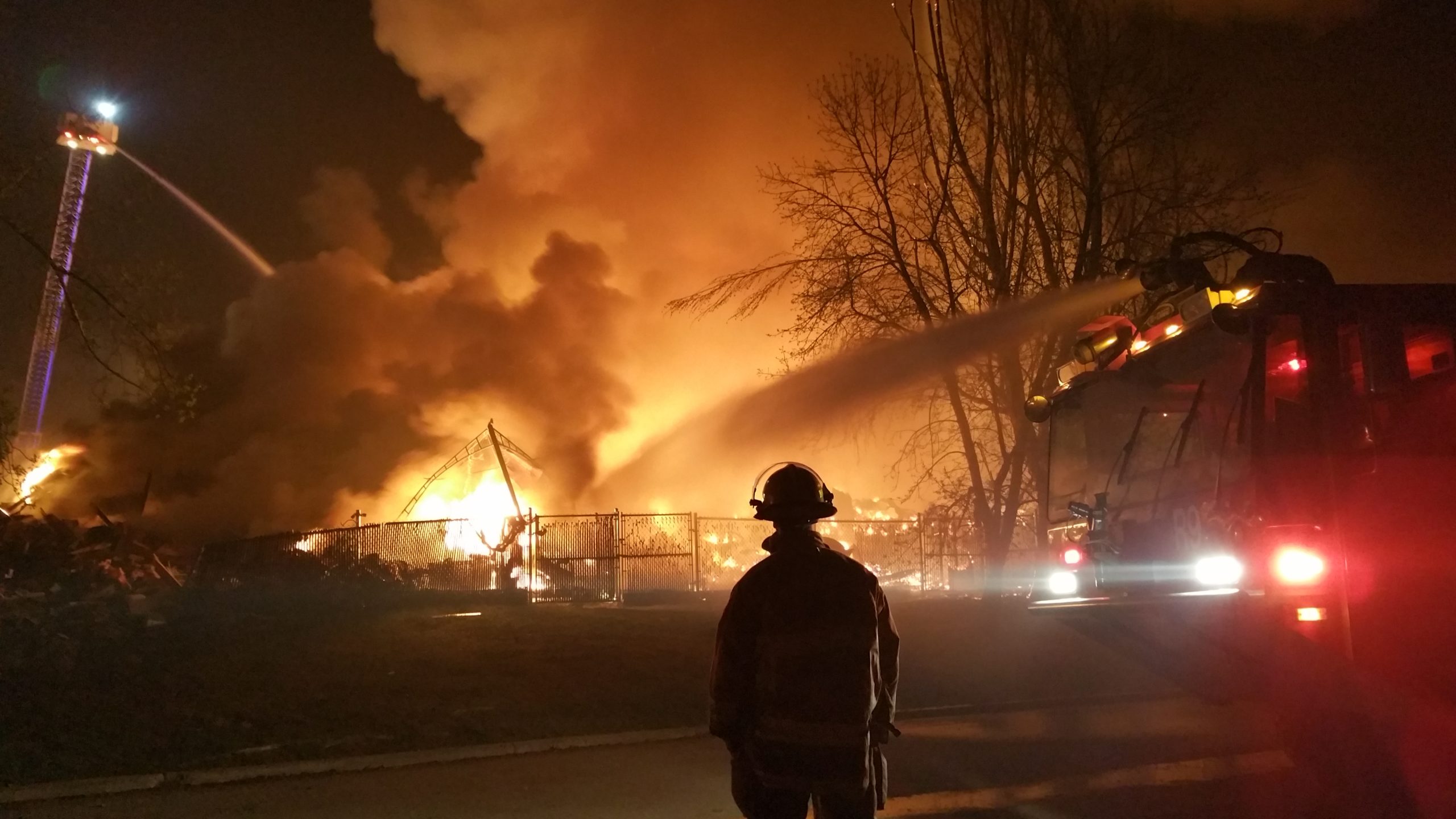
Photo courtesy of Keith Diakiw, CD, P.Geo.
Leaving $9.9 billion of damage in its wake, the Fort McMurray wildfire triggered the largest evacuation in the province’s history.
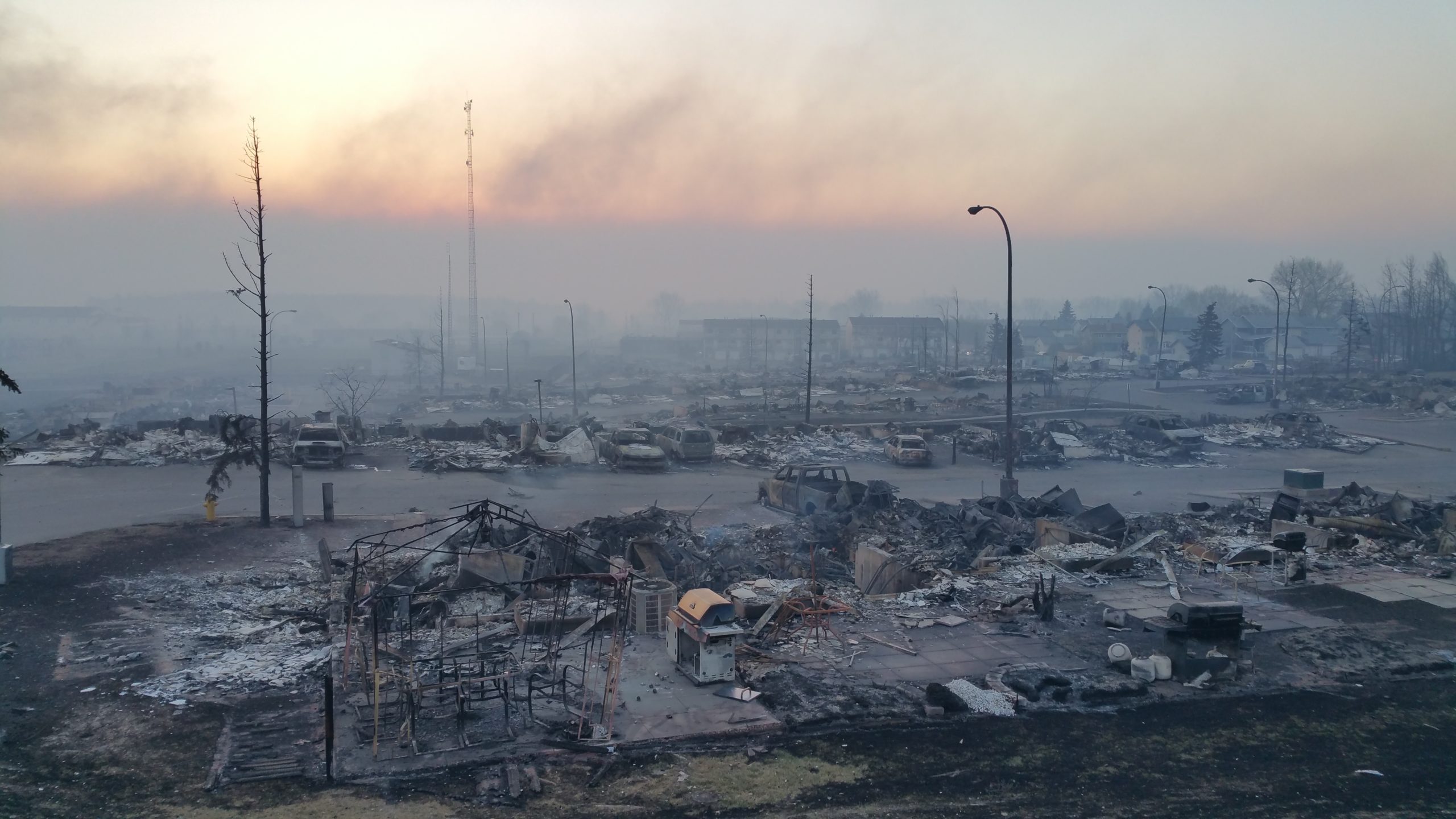
Photo courtesy of Keith Diakiw, CD, P.Geo.
Research and recommendations
Professional engineer Quazi Hassan, PhD, is one man determined to help the province stop burning.
Recently appointed as Director of the Centre for Environmental Engineering Research and Education at the University of Calgary’s Schulich School of Engineering, Dr. Hassan says civic design and planning can work together to fuel a fire—or to prevent its spread.
“We’ve used satellite data to understand the vulnerable zones and how to protect the cities and urban areas in the heart of forested land,” he explains. “So we’ve covered the science, and now we need to talk to people, to understand the perceptions of the citizens actually living there.”
After conducting a study—sponsored by the Canadian Association of Fire Chiefs—in 2018, Dr. Hassan has some recommendations for stopping or slowing wildfires: leave more open spaces, use parking lots and ring roads as firebreaks, and avoid incorporating unnecessary groves of trees.
The research continues, and Dr. Hassan’s team is now speaking to others—fire officials, emergency services, insurance officials, tourism offices and municipal governments, and Indigenous community leaders—about the fires in Fort McMurray and Slave Lake, and how they feel about the recommended fire prevention measures.
That information and the research will be passed on to the Alberta Land Institute, and then on to the provincial government, where they may ultimately alter land-management strategies.
Dr. Quazi Hassan, P.Eng., centre, is conducting research on how to protect the cities and towns in the heart of forested land.
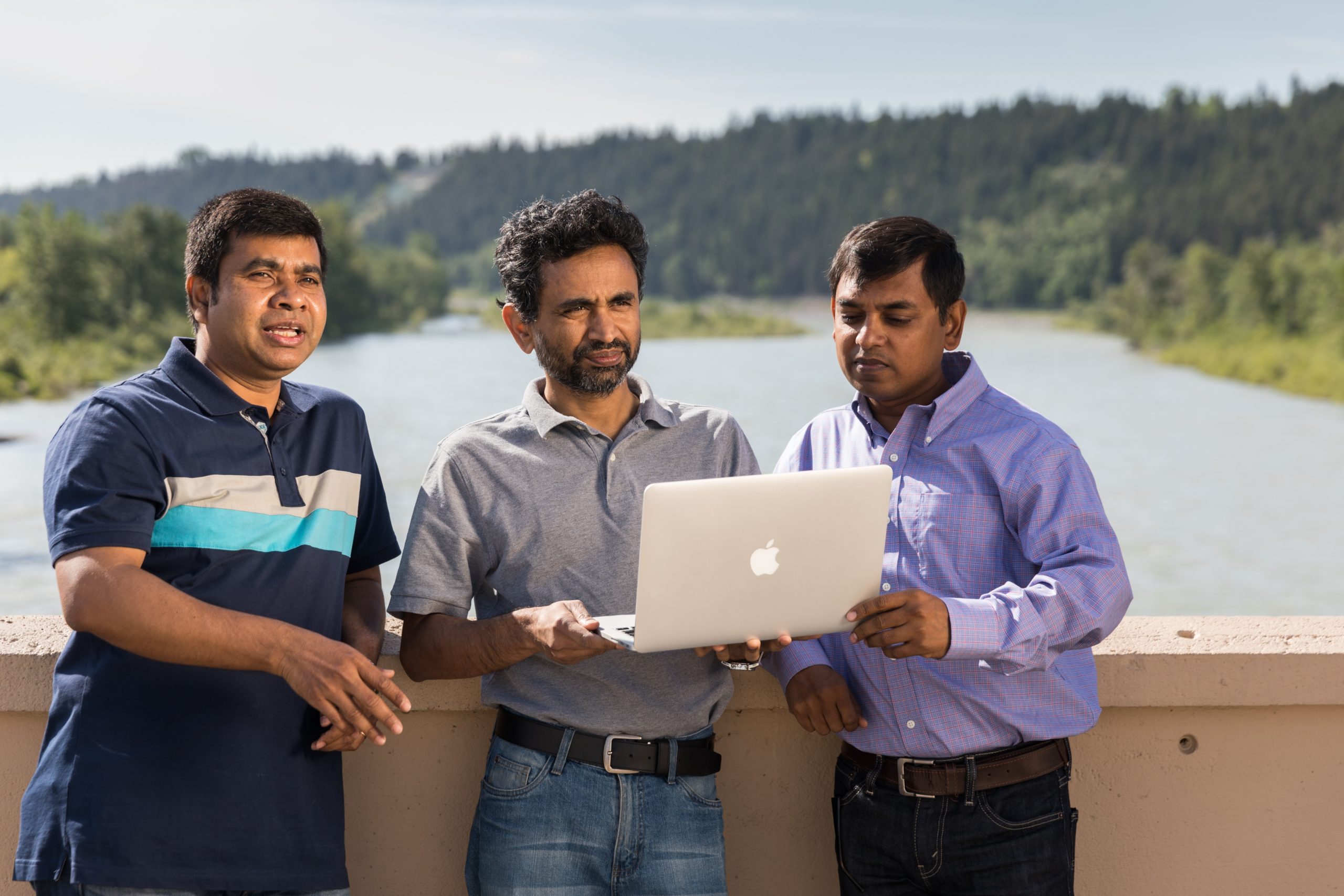
Photo courtesy of Schulich School of Engineering, University of Calgary
Setting up sensors
An electrical engineering professor at the University of Alberta is taking a different approach.
With the support of Alberta Environment and Parks, professional engineer Masum Hossain and his team have developed a sensor that can detect and report fires within minutes—a task currently performed by observers in fire-lookout towers. There are only 127 lookout towers in the province.
Masum Hossain, P.Eng.

Photo courtesy of Masum Hossain, P.Eng.
“We don’t have towers located densely enough to easily watch for wildfires. Most of the time it’s residents calling, and that’s way too late. By that time, the fire has already spread,” notes Hossain.
“An alternative is continuously taking satellite images, and that’s really expensive because we don’t have our own dedicated satellites to do that. Each square kilometre costs a few thousand dollars.”
That’s where his sensors come in.
When a fire is about to start, the density of particulate matter and other elements in the air increases significantly. The sensors detect these particles and send forestry workers an alert within two minutes of the fire’s ignition.
Working with his team at the University of Alberta, Masum Hossain, P.Eng., has developed sensors that can detect forest fires within two minutes of their ignition.
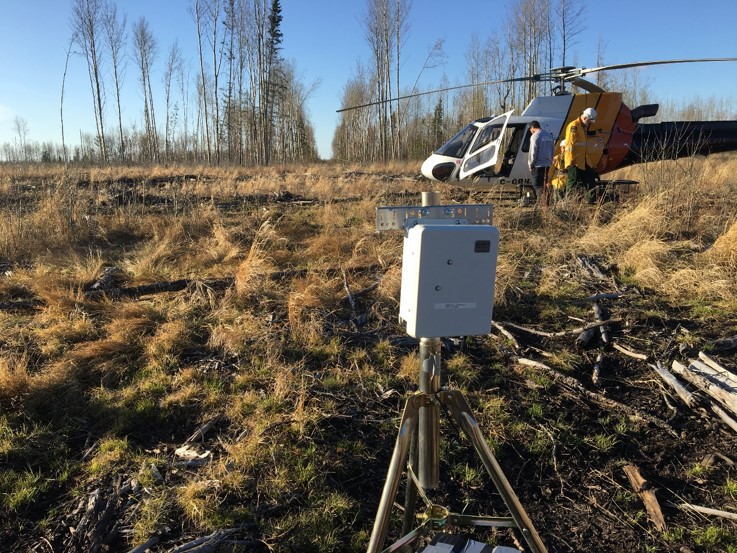
Photo courtesy of Masum Hossain, P.Eng.
Keeping the price down
Such sensors are not new, but they’re typically very costly—one unit can be more than $1,000, which adds up when you consider covering a forest with them. They also rely on cellular service to transmit their messages, which can be hard to find deep in the forest.
By customizing the sensors, Hossain and his team have reduced the cost of each unit to around $100. Data is collected by drone and sent back to the base station, eliminating the need for adequate cell reception.
The team also incorporated solar panels on the units, so there are no batteries that need to be changed.
Hossain and his team started deploying the sensors two years ago, comparing and benchmarking their performance against their costlier counterparts. The verdict: “The readings are really reliable, and the sensors work really well in harsh environments, such as the ones we face during a forest fire.”
The future depends on us
Technology can go a long way in keeping our forests safe, Hossain says, but Alberta needs another important tool in its arsenal.
“We have to figure out a way to be environmentally aware, and to do things to prevent forest fires. Early detection and technology will help to contain them, but human behaviour needs to change to prevent them.”
